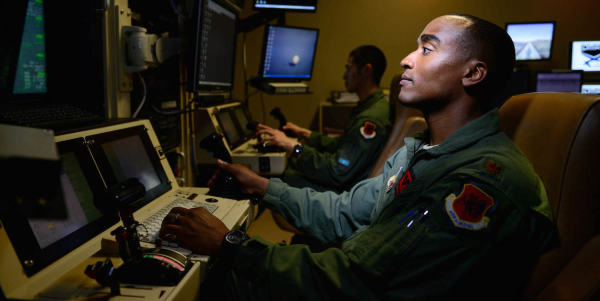

Secretary of Defense Ash Carter’s recent Force of the Future initiative includes a provision that would expand the use of lateral entry to address shortfalls in niche fields that are difficult to train and maintain.
In his words, “allowing the military services to commission a wider segment of specialized outside talent … who can meet our standards, who provide unique skills we need and who are willing to serve in uniform will help fill critical gaps in our force and will make us more effective.”
In reading this, the first thing that I thought of was staring at the ubiquitous rank/paygrade block on forms I’ve had to fill out for almost 20 years. I’ve always thought it peculiar that some forms request “rank” while others prefer “paygrade.” I’m even convinced the occasional hybrid “rank/paygrade” nomenclature was only created to instigate a subtle protest of uniformity and entertainment as one contemplates how to respond.
The military is one of only a handful of organizations that run around with each person’s financial compensation in the open for all to see — we literally wear it on our collar/shoulder/arm. I can’t imagine the corporate strife that would exist if financial compensation became as transparent as it is in the military. But, there is a huge difference between rank and paygrade and this undertone is likely the cause for varied reception among the services.
While paygrade is bestowed, rank is earned; anyone who has ever donned a uniform can relate. There is a huge difference between referring to a Navy senior enlisted as an “E-7” versus a “chief petty officer,” though I don’t recommend testing this hypothesis.
The military’s current cadre of lateral-entry officers are all well-advertised and in homogenous careers: health care, ministry, and law. The Marines are the sole exception; they have no doctors, no chaplains, and Marine lawyers are line officers (they use naval healthcare and chaplains). Not surprisingly, the Marines are most vocally opposed to the lateral-entry initiative. The axiom “every Marine is a rifleman” is literal, not figurative, and it works so well for them. Their service is fanatically unified around its purpose, and it’s easy to understand why a lateral-entry officer would struggle immensely with leading Marines.
At the risk of stereotyping, I speak from both experience and respect when I say the Air Force is less unified in purpose and more corporately fragmented. With arguably the most varied core functions and a myriad of major commands, the service can almost be thought of as several organizations co-existing under the Air Force banner. The adage that there are more lieutenant colonelsin the Air Force than there are lieutenants in the Marine Corps is actually quite true — and that’s counting all of Marine Corps’ second lieutenants, first lieutenants,and lieutenant colonels.
Due to the wide breadth of functional responsibilities, it is not a given that someone bearing the title of airman could accurately identify the difference between an F-15 and F-16 or a B-1 and B-2. And, that’s actually okay. The truth is that knowing the distinction likely has no effect on that airman’s ability to perform his specialty. This is just like how the Apple store salesman’s performance is wholly unaffected by his lack of understanding how the IOS roaming algorithm threshold was designed and why your phone sometimes switches to roaming. The value of this high-demand person is predominantly his specialty, not his ability to lead an organization. Yes, there is an effect on culture (nothing is free), but the trade-off is filling a critical niche manpower need.
While it’s easy to offer an alternative — that these line officer lateral-entry positions should be filled by contractors or government employees — it’s not that simple. While the military’s civil service support is critical to function, they are a support function. Generally speaking, to be afforded rights under the Geneva Convention and associated laws of war, one must be a member of the armed forces. Avoiding the Title 10-Title 50 debate, as the Air Force looks to take the lead in space and cyber domains, it is likewise coupled with increasing talks as to what constitutes an act of war. Support personnel are increasingly blurring the lines of how their actions contribute to conflict.
Currently, the Air Force walks the line with the use of government-owned, contract-operated arrangements within special operations, but they are used for intelligence, surveillance, and reconnaissance, not kinetic actions. Manned contract-owned, contract-operated aircraft have operated in Afghanistan for years performing similar missions as active-duty brethren, though they have been notably prohibited from using lasers to target and guide weapons, both actions that are inherently military.
Assuming these niche skills are in high demand, it only makes sense that the compensation should be just, which brings the discussion back to rank versus paygrade.
Modernizing the force through aspirations of strategic agility must begin with the reality of necessary organizational agility. Militarizing specialists to capitalize on their niche skills and expertise to execute the National Security Strategy affords those individuals legal protection they would not otherwise have.
While it’s easy to acknowledge there is much to be gained by building relationships with the private sector, does the compensation of the specialist who is brought into uniform require the requisite rank to perform those duties? Perhaps the evolution of personnel needs dictate that rank and paygrade no longer be synonymous in all cases? Maybe the key is that obscure “rank/paygrade” block on the next form you fill out.